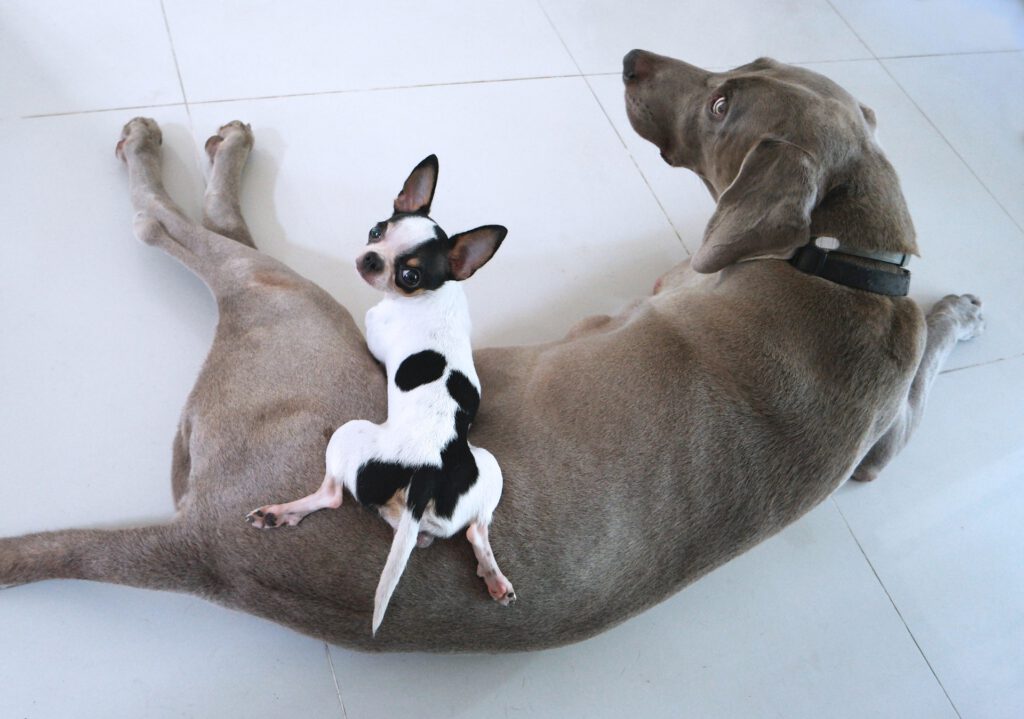
Many people love dogs so much that they can’t fathom the idea of only owning one! But what happens if your dream is to own both a big dog and a small dog? Will they become best buddies or archenemies? In this article, we’ll reveal the small dog breeds that get along best with big dogs so that you can decide which is right for you.
Why Some Small Dogs Are Friendly With Big Dogs
With so many possible combinations of dog breeds to consider, it can be overwhelming trying to figure out which pair would be the friendliest. Luckily, there are a few features we can keep in mind when deciding which small dog breeds are most compatible with big dogs.
Temperament
Regardless of which breed you choose, it is important to pay attention to the unique personality of the individual dog you are considering for adoption. Some pups are feisty, others are easily excitable, and still others are calm and mellow. Which of these traits do you prefer and which would mesh well with your big dog’s temperament?
Ask your breeder about their options for matching puppies with their adopting owners. Some reputable breeders will monitor each new litter and keep detailed records about each puppy’s behavior. They can then select a dog that will be compatible with you and your large dog.
Breed
Humans have been keeping dogs as pets for a long time. Some were raised to hunt and fetch game while others have been bred to live a spoiled indoor life. This means that there is a lot of variation between dog breeds.
For example, although you may encounter many sweet and wonderful pit bulls, you can be sure that the average pit bull is more aggressive and prone to fighting than the average Papillon. If your small dog’s breed is famous for barking and starting fights, your large dog should ideally be patient and well-trained.
If you are unable to spend much time with your new small dog before signing the adoption papers, a deep understanding of the breed’s characteristics can be helpful in determining whether it would be a good match for your big dog.
The 5 Best Small Dog Breeds For Big Dogs
Now we understand what makes some tiny dogs live so peacefully with large dogs. Let’s discuss the 5 best small dog breeds that get along with big dogs.
Poodle
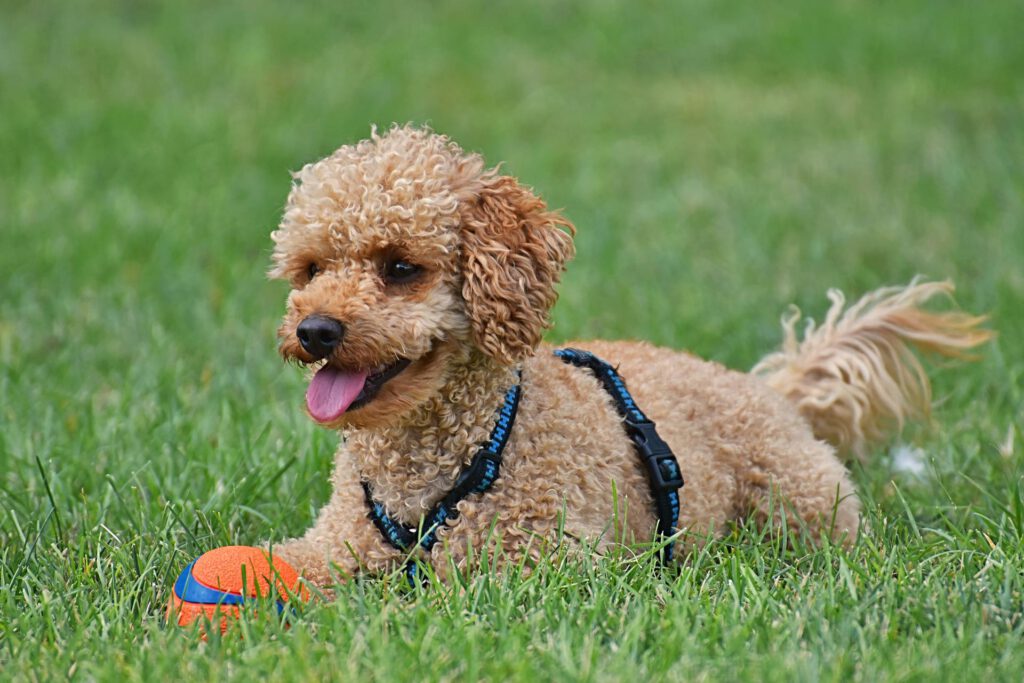
Poodles are highly adaptable and social dogs, and they tend to get along well with other dogs of all sizes, including big dogs. This is because poodles have been bred to be companion animals and have a natural inclination to be friendly and outgoing with other dogs. Additionally, poodles are highly trainable and respond well to positive reinforcement training, which can help them learn to socialize and interact well with other dogs.
Bichon Frise
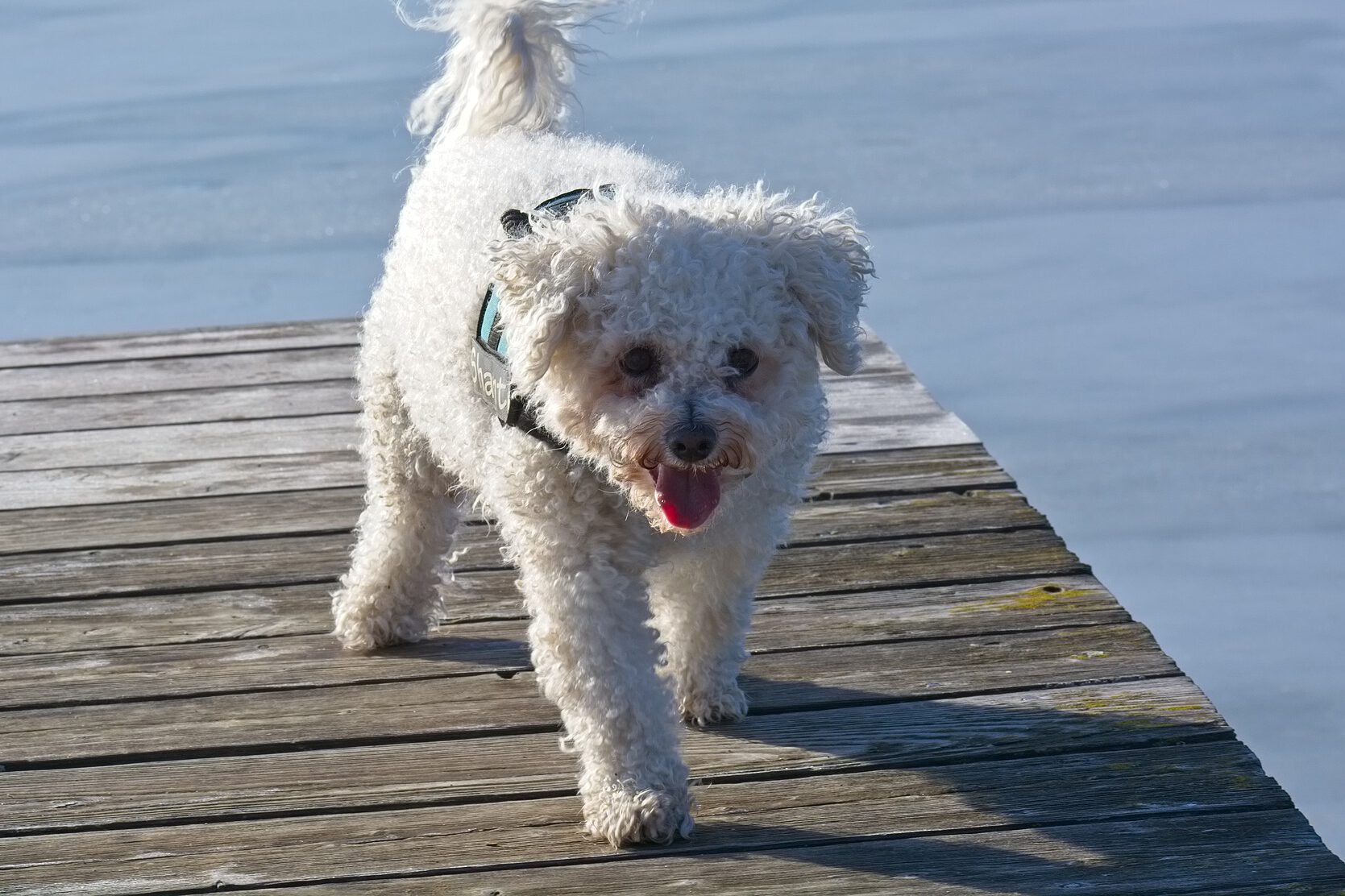
The Bichon Frise is a cute ball of fur that can hang with the biggest of dogs. Bichon owners tend to agree that their dogs can be loud and rambunctious, in a very good-natured manner, of course. So if you have a big dog that’s not intimidated by a bit of yapping, you can expect your big and little boys or girls to become fast friends.
Boston Terrier
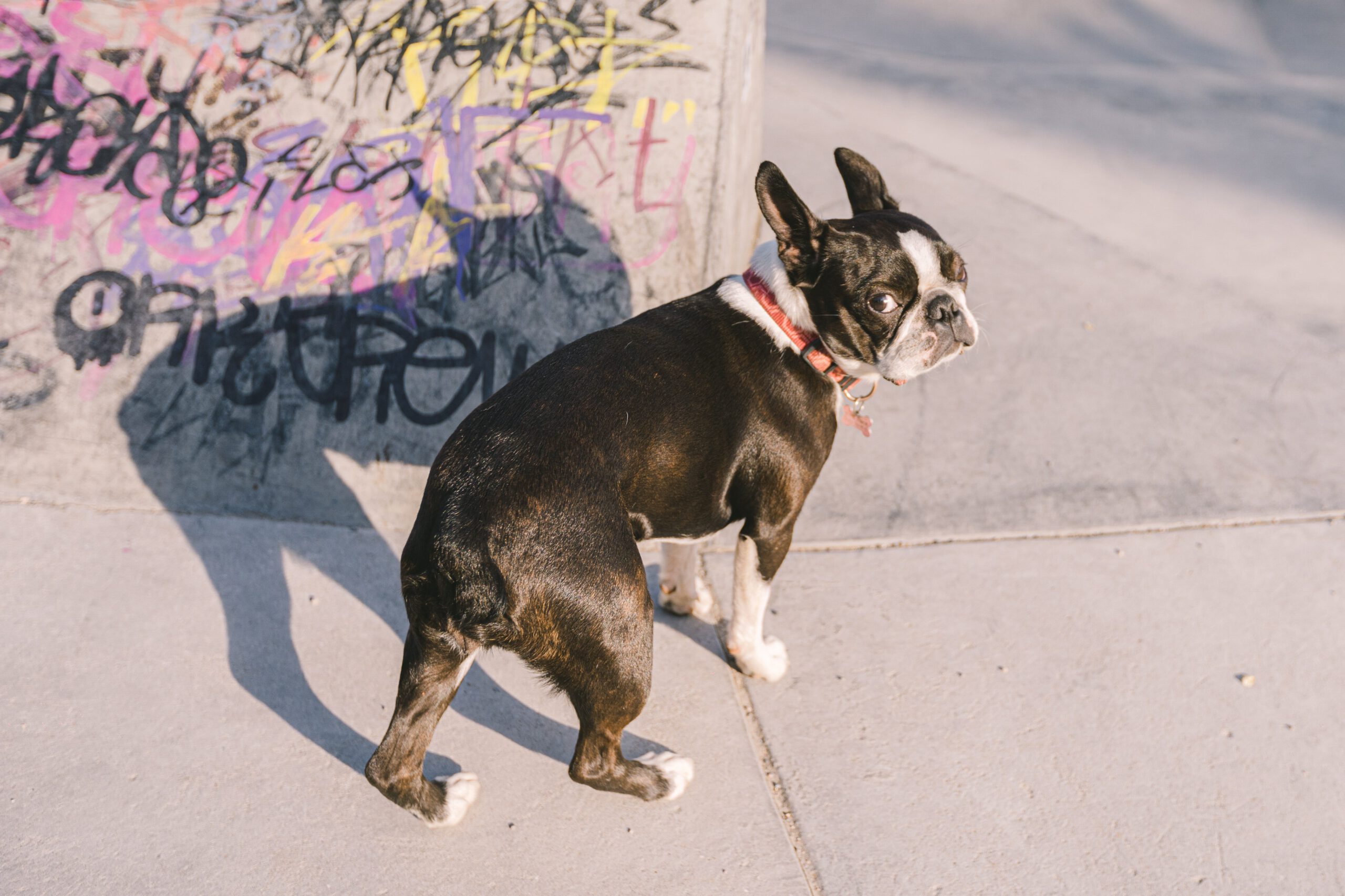
Terriers are famous for their high prey drive, so you might expect them to chase small animals such as cats and rabbits. However, they are more likely to see large dogs as their friends rather than a tasty meal. Boston Terriers in particular may sometimes seem aggressive but their energy is usually friendly and playful.
Papillon
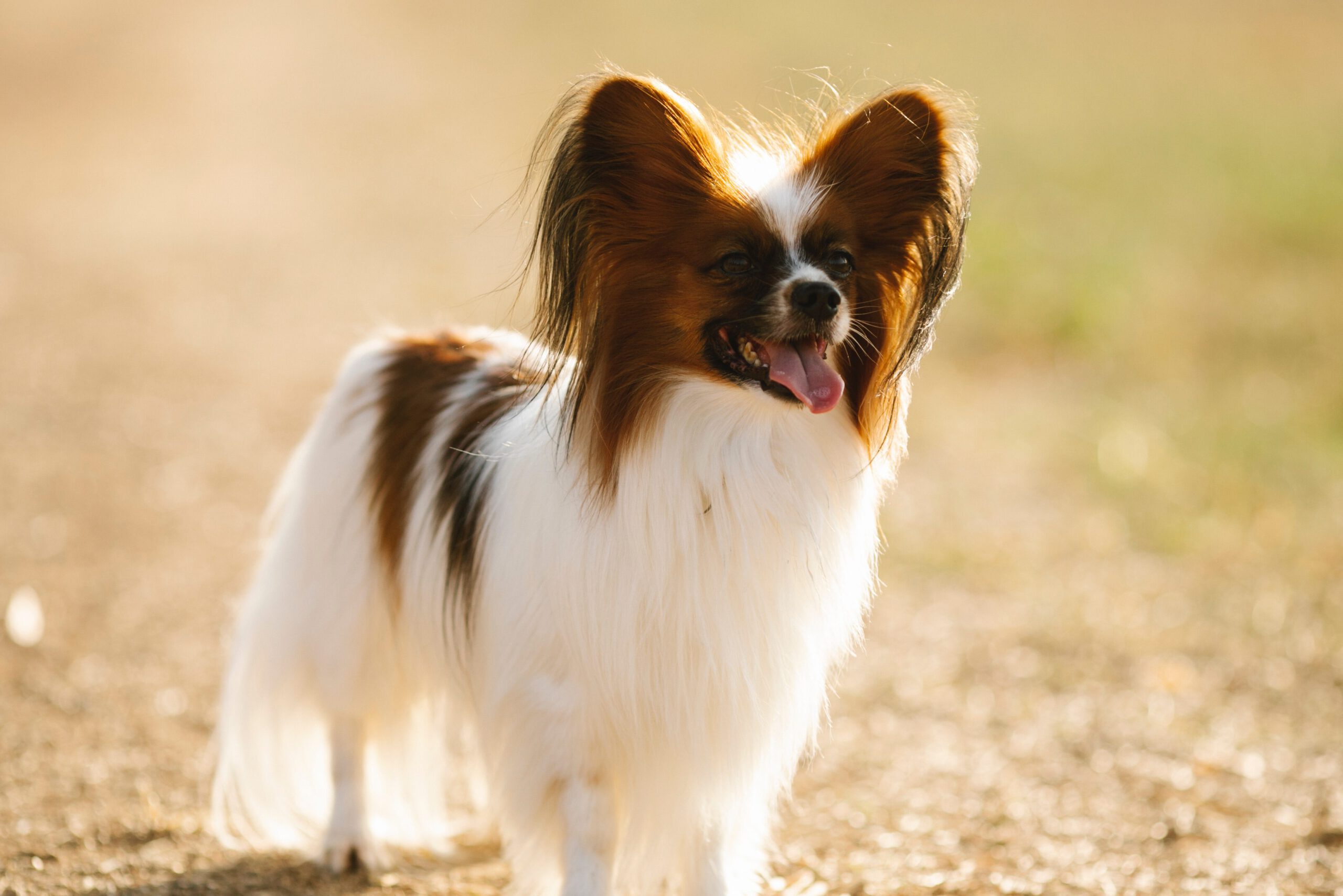
Papillons have a sweet, unassuming personality that matches their butterfly-shaped ears and soft coat. Your large pup may be intrigued by this distinguished small breed, and before long you may even catch them playing together.
There are mixed reviews when it comes to the barking habits of the Papillon. Some owners claim their dogs bark a lot while others insist that their pups only make noise when threatened. Take note of your future Papillon’s personality before adopting if you think this is a concern for your big dog.
Pomeranian
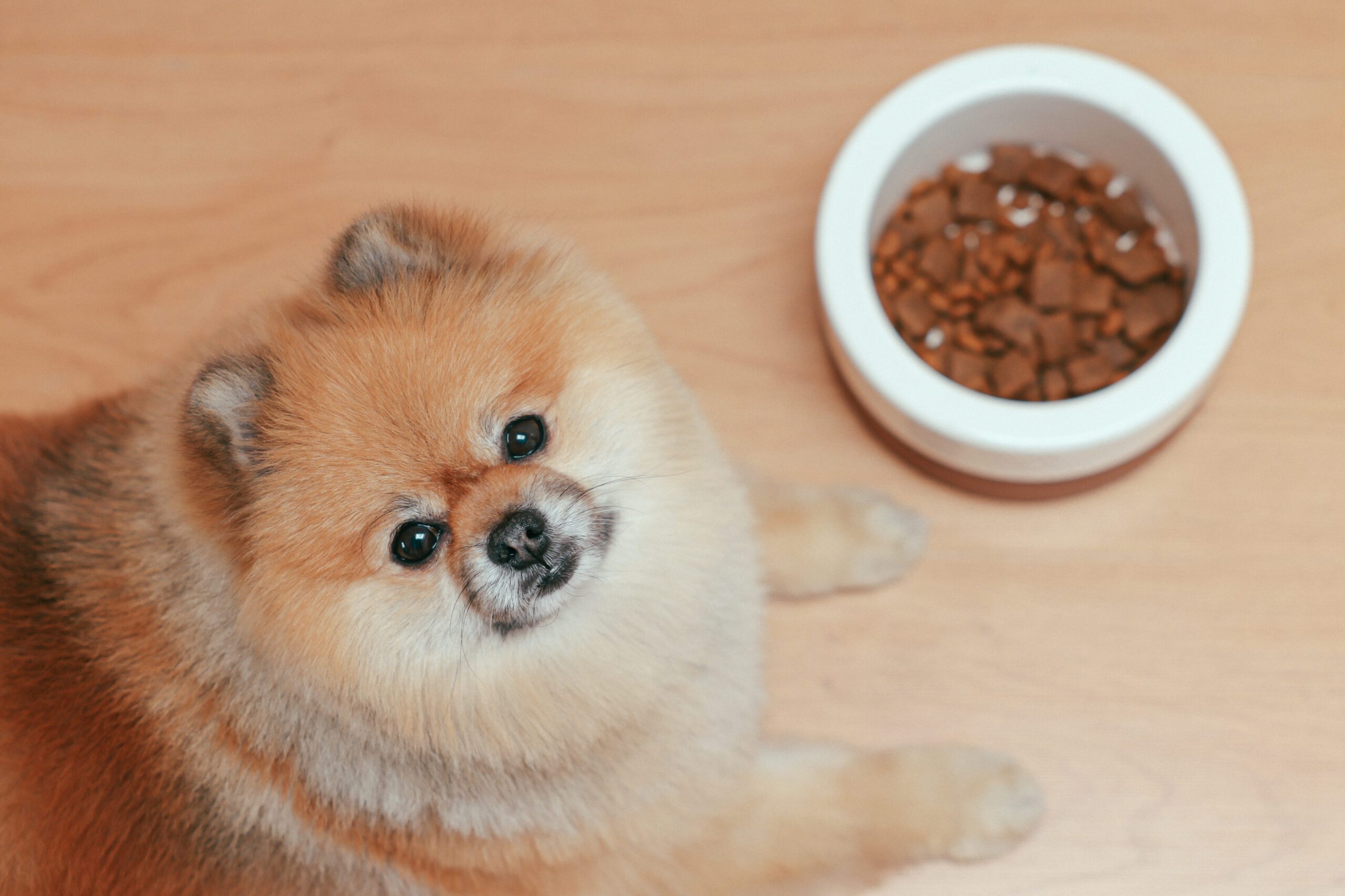
Pomeranians are sometimes considered the “Goldilocks” of small dogs. They are friendly with people and other pets but still loyal to their pack. Pomeranians can frolic and play without becoming annoying. We think these are great characteristics for sharing a home with a big dog. Once they have adjusted to each other, your two pups might be having so much fun that you’ll feel guilty breaking them up for meal time!
Maltese
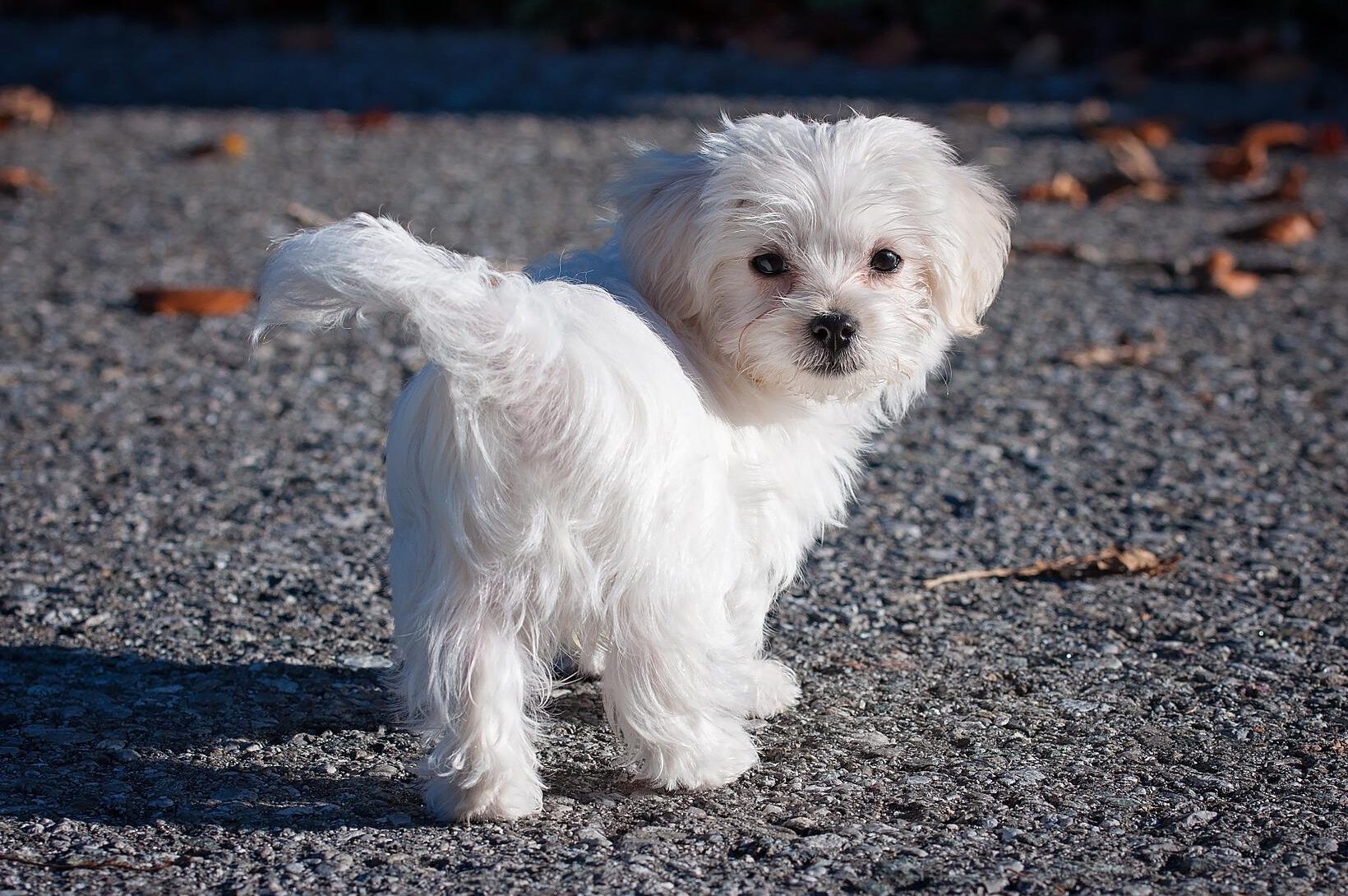
Few dogs are more loving and entertaining than the Maltese. These small, silky-haired pups have a playful spirit and are sure to capture the heart of your large dog.
Be aware that some Maltese have a “guard dog” mentality, remaining vigilant and barking if they feel threatened by other animals or people. You may need to plan ahead and devote extra time and attention as your two dogs get to know each other.
Frequently Asked Questions
Can big dogs hurt small dogs?
Yes, big dogs are capable of injuring small dogs. Many large dogs tend to be laid back and gentle but they do not always respect the human rule of “picking on someone your own size.” This is especially true if they sense any threat to their owners or territory. Larger, stronger dogs can easily overpower their smaller siblings, so it’s important to teach both dogs correct behavior.
How do you introduce a large dog to a small dog?
In the very beginning, you may choose to have the two dogs meet in a neutral outdoor space such as a city park. This way, neither of the dogs feels that their property is being threatened.
Always supervise their playtime, especially in the beginning, so that any aggressive behavior can be corrected immediately. You can also reinforce good behavior by handing out treats when one of the dogs approaches the other without barking.
Are big dogs scared of small dogs?
Big dogs can sometimes be afraid of little ones, but the reaction is not what you may expect. The fear is often expressed as anger. If the big dog feels that the small dog poses a threat, there may be snarling, growling and even biting. Dogs understand that size is not everything, and even a tiny pup is capable of stealing food or inflicting an injury on the big dog’s owner.
How long does it take for a dog to adjust to a new dog?
The acclimation process for your dogs will last at least a few days. At most, it can take up to a month for two dogs to become consistently friendly with each other. Bringing a new dog into the home requires an adjustment period for the old dog and there’s not much you can do to speed it along.
Your dogs may have good days and bad days, but if you remain consistent and reinforce good behavior, the two pups should eventually learn to live in harmony.
Which dogs do not get along with other dogs?
Some breeds just having a harder time sharing their home with other dogs. If a dog is aggressive with strangers and other animals in public places, you can safely assume that this behavior will apply at home. The following breeds tend to be territorial and less likely to live in peace with other pups.
- Chihuahua
- Chow Chow
- German Shepherd
- Akita
- Pit Bull
- Jack Russell Terrier
- Dachshund
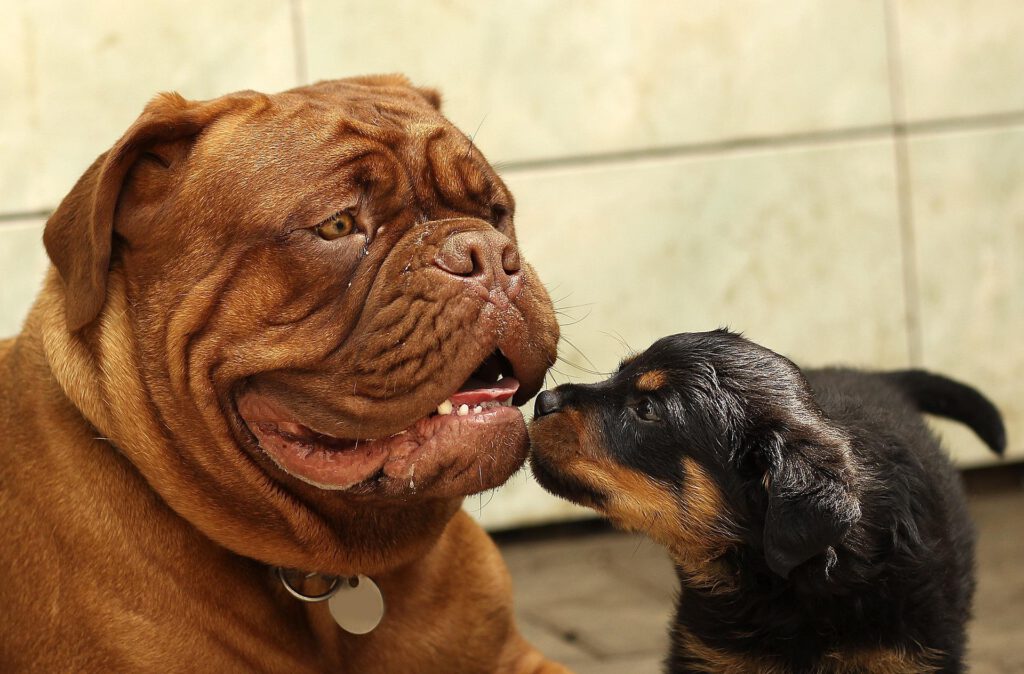
Conclusion
Small dog breeds can be very different from large breeds, both visually and behaviorally, and sometimes you may forget that they belong to the same species! Figuring out how to make big and small dogs get along can be a daunting task. We hope this article has helped you identify which small dog breed would be a great fit for you and your large dog.